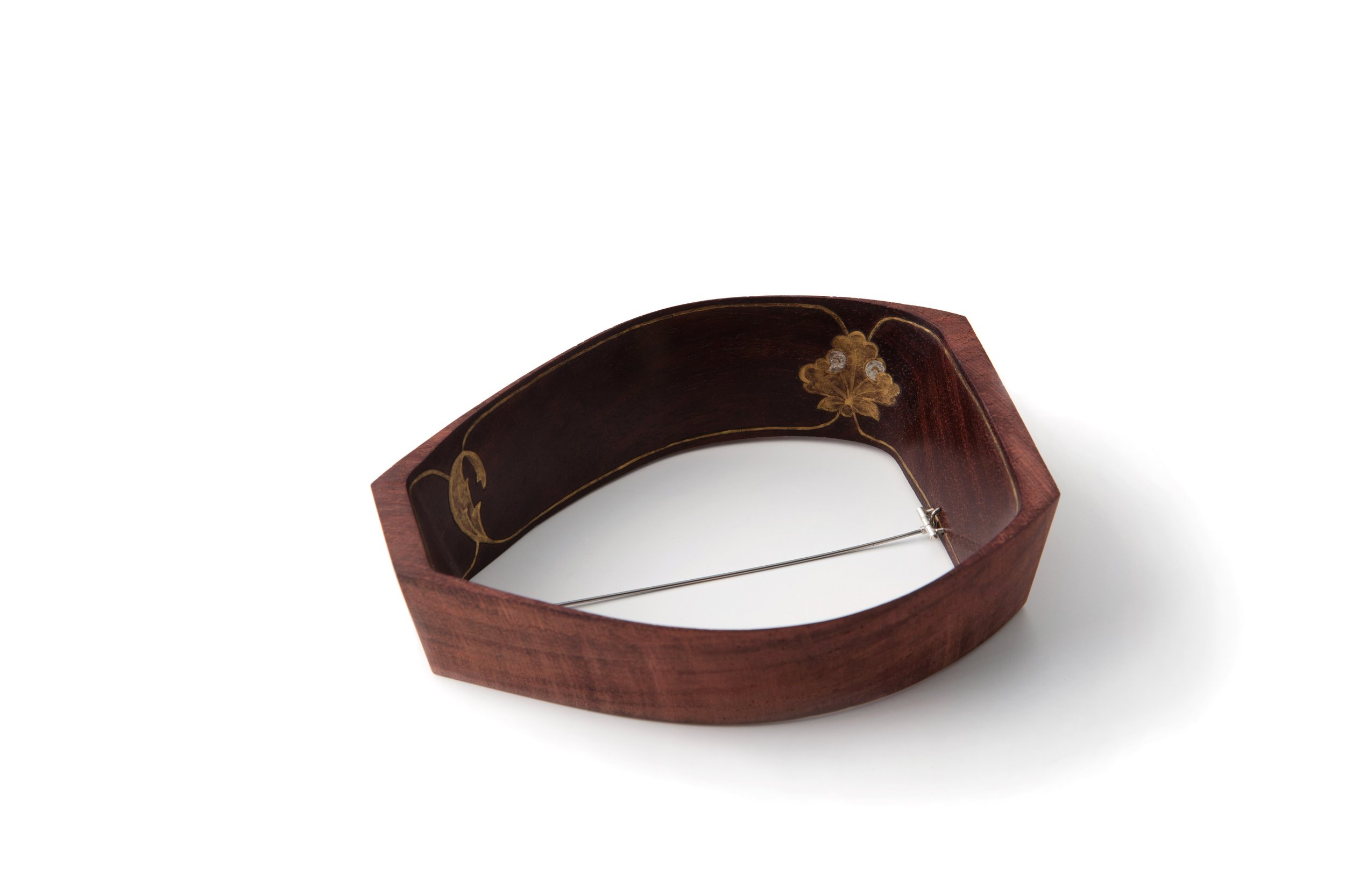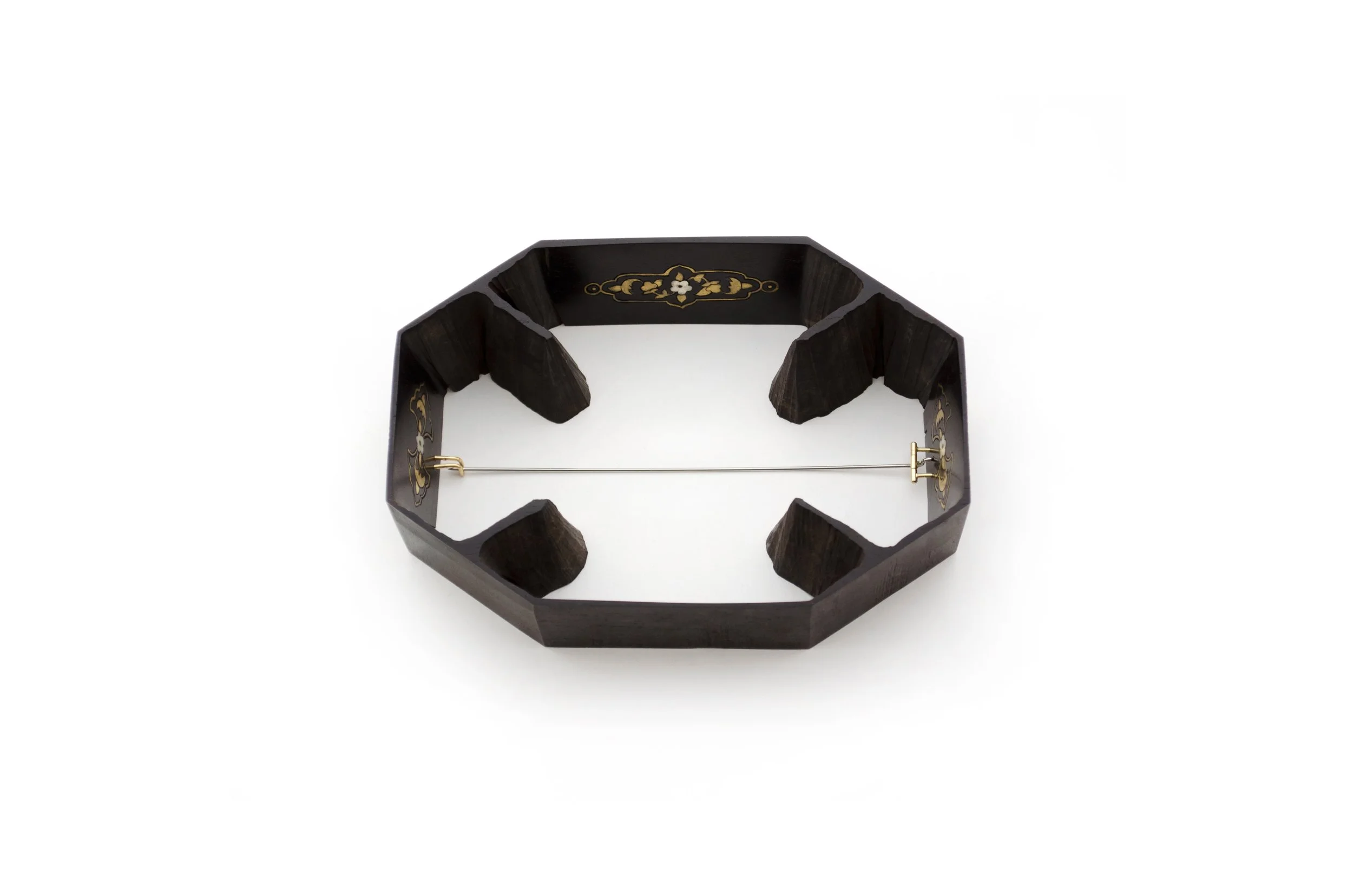Tilasm +
Tilasm +
In 2011, I spent two months in Istanbul on a scholarship, where I joined a circle of women to study the Arabic-Islamic art of ornamentation known as Tezhip. Within this tradition, art is not separated from spirituality—every creative act is a form of prayer, an offering of beauty with profound meaning. This stood in stark contrast to my own Western artistic education, where ornamentation is often dismissed as decorative excess—superficial, even suspect. That colonial mindset, which historically devalued non-Western aesthetics as inferior or merely ornamental, was deeply ingrained in the frameworks I had been taught. Immersing myself in Tezhip confronted those assumptions and exposed the limitations of a Eurocentric canon that privileges minimalism and abstraction while marginalizing richly symbolic traditions from the Global South.

Tilasm 1, 2011, Bocote-wood, silver, shell-gold green, yellow

Tilasm 2, 2011, Padouk-wood, silver, steel, shell-gold white, yellow
